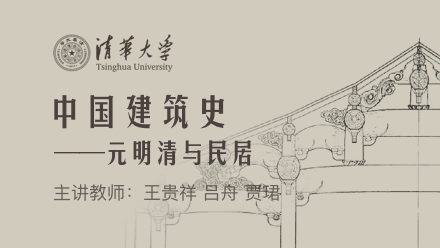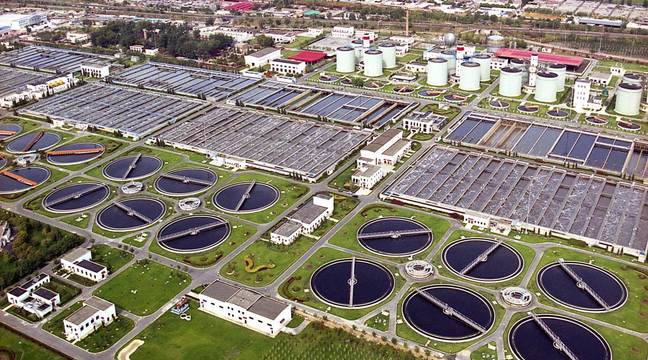
当前课程知识点:History of Chinese Architecture Part II > 15 Traditional vernacular architecture in China > Section 2 > Cave dwellings in the Loess Plateau
返回《History of Chinese Architecture Part II》慕课在线视频课程列表
返回《History of Chinese Architecture Part II》慕课在线视频列表
最后我们来看一下 黄土高原的窑洞民居
这是一种依托黄土挖穴的民居形式
它的前身可以追溯到原始社会的横穴
这种窑洞民居在干旱少雨的黄土地区
比如说 陕 甘 宁 晋 豫一带都非常普遍
主要有三大类型
靠崖窑 下沉式平地窑 和锢窑
靠崖窑是在天然崖壁上向内开挖的券顶式横洞
高宽在两到三米左右 进深大约六到十米
窑顶上至少保留三米以上的土层
根据土质情况
窑顶可以是平圆形 满圆形
或者是尖圆形等形式的拱顶
窑洞可以分为前后两间
也可以双窑 或者三孔窑并联使用
还可以挖出上下层的窑洞
一般窑口空气充足的地方
安排上灶 炕等生活起居用品
深处用于贮藏 窑壁上可挖龛放置用具
也可以挖炕窑放置板床
甚至可以挖出拐窑做储藏室
还可以挖出子母窑等等
这些都是窑洞扩大空间的方式
窑洞外立面称为窑脸
简单的窑脸露出土墙或土坯墙
中间开门窗洞口
讲究的就砌砖墙防护
甚至雕刻砖花 称做贴脸
也有的在窑脸外再接一段石窑或者砖窑
称为 咬口窑
窑洞外面可以用土墙
或者是锢窑式房屋围合成合院
比如河南巩县的康百万庄园
就是黄土高原地区规模最大的靠崖窑住宅群
它的主宅区是十六孔靠崖窑
整个窑群依靠着黄土崖呈折线形布置
组成了五个并列的窑房四合院
平地窑是在没有天然崖面的情况下
从平地向下挖坑成院
再向坑内四壁挖横穴的方式
所以又称地坑院或天井院
窑洞上方应当有足够的土层
以满足结构和保暖的要求 一般也在三米左右
平地窑的窑脸全藏在地面下 比靠崖窑更为隐蔽
所以谚语称它是
“上山不见山 入村不见村
只闻鸡犬吠 院落地下存”
平地窑院的形状有方形 长方形
以及较特殊的T字形 三角形等
窑院布局类似北方通行的四合院
以北窑为上房 用作起居室及长辈的卧室
东西厢用作卧室 厨房或贮藏间
南窑有入口 厕所 牲畜房等等
院子里有坡道或台阶能达到地面
也可以用过洞把几个窑院联系在一起建成组群
比如 甘肃庆阳地区的平地窑
在一个天井院里面再分成两到四个院子
甚至形成一个长胡同 两侧分布着近十个院子
锢窑 是模仿窑洞形式在平地上用砖石
土坯发券建造的窑洞房屋
券顶上敷以土层 做成平顶房
屋顶用做晾晒粮食的平台
也有阶梯可以到达
锢窑最普遍的形式是三孔锢窑
然后以此为基本单元组合成三合院 四合院
甚至建造两层
因为窑洞房屋覆土层厚 具有冬暖夏凉的优点
所以在晋西 陕北 豫西等地区
往往以锢窑为上房建造四合院
例如巩县新中乡的张诰庄园
各层锢窑都设外梯上下贯通
形成高低错落 层次丰富的窑洞群
还有在呼和浩特 张家口一带
流行一种土坯砖拱的锢窑 细土平顶
更有意思的是土灶 土台
它里里外外全是泥土
与整个的黄土环境混为一体
无论是哪种窑洞
都有覆土厚 防火隔音 冬暖夏凉的优点
更重要的是靠崖窑和平地窑
都尽量向土层里面求得空间 少占平地
经济适用 还具有不破坏生态环境
不占用农田的优点
但同时它也存在着潮湿 阴暗
空气不流通 施工周期长等缺陷
窑洞空间可以横向并联 也可向纵深发展
还可以进行局部的拓展
在大窑一端挖小窑 拐窑 子母窑等等
窑洞民居在黄土中凿出空间
它虽然没有其他的民居所具有的造型与轮廓
但是它突出表现了与黄土地融为一体的质感美
人与自然和谐以及内部空间构成的巧妙性
具有粗犷 淳朴的乡土气息
尽管窑洞民居有着非常鲜明的生土特点
但是在构图原则上
它跟北方合院式民居仍然如出一辙
中轴对称 以庭院为中心布置房间
所以从空间类型上来说
它仍然是北方合院在黄土地的演变
此外 我国传统民居建筑还有多种建筑形式
比如西南各民族习用的
底层架空的干阑式民居
北方游牧民族轻木骨架的毡包民居
石砌的藏族碉楼 土构的维吾尔族阿以旺民居
以及鄂温克族圆锥形的撮罗子 等等
由于时间关系
这些我们将在下一讲
多民族建筑中再讲
-Section 1
--Xanadu and Dadu of the Yuan Dynasty
--Religious Buildings of the Yuan Dynasty
--Buildings of Science and Technology in the Yuan Dynasty
-Section 2
--Reconstruction of the Ming System and an Overview of Its Cities and Architecture
--Cities and Towns Outside the Capitals in the Ming Dynasty
-Homework
-Section 1
--Forbidden City of Beijing in Ming Dynasty
--Imperial Altars and Temples of Beijing in Ming Dynasty
--Temple of Confucius in Qufu, Ming Dynasty
--Ming Xiaoling Tomb in Nanjing and the Ming Tombs in Changping
-Section 2
--The Buddhist Architecture of Ming Dynasty
--Taoist architecture of the Ming Dynasty
--Architecture of the Educational Institution of Ming Dynasty
-Homework
-Section 1
--An introduction to architecture of the Qing Dynasty1
--An introduction to architecture of the Qing Dynasty 2
-Section 2
-Section 3
-Homework
-Section 1
--Cities and urban facilities in the Qing Dynasty
--Government office mansions and architectural rules1
--Government office mansions and architectural rules 2
-Section 2
--Temples and altars, religious architecture and spiritual life
--Commercial architecture and econimic life
--Theaters and recreational life
-Homework
-Section 1
--Architecture: Europe and China & Imperial Specifications for State Buildings
-Section 2
--The architectural artisans 1
--The architectural artisans 2
--The architectural artisans 3
-Section 3
--Appreciation and Analysis of a Few Examples1
--Appreciation and Analysis of a Few Examples 2
--Appreciation and Analysis of a Few Examples 3
-Homework
-Section 1
--Introduction to the Chinese classical gardens
--The imperial gardens in Ming and Qing dynasties 1
--The imperial gardens in Ming and Qing dynasties 2
-Section 2
--Private gardens in Jiangnan (the regions south of Yangtze River)
--Private Gardens in Lingnan regions
--Private Gardens in North China
-Homework
-Section 1
--A brief history of the Chinese vernacular architecture
--The courtyard house of the northern China
--Tingjing style vernacular dwelling in the regions south of the Yangtze River
-Section 2
--Tingjing style folk dwellings of the southern China
--The Hakka earthen house in the southeastern China
--Cave dwellings in the Loess Plateau
--The architecture achievement of Chinese traditional vernacular dwellings
-Homework
-Section 1
--Residential buildings of the Manchu and Chaoxian (Korean) ethnic groups
--Architecture of the Uygur ethnics in Xinjiang
-Section 2
--Tibetan architecture in Tibet
--Multi-ethnic Architectures in the Southwest Regions
-Homework


